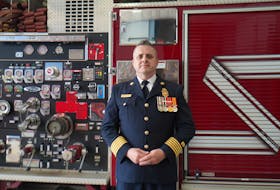♦ The Second World War began in September 1939 with Germany’s assault on Poland. Germany invaded much of Western Europe in the spring of 1940. The war ended in August 1945.
♦ A failed Allied raid on Dieppe, France, in August 1942 resulted in heavy losses, especially for Canadians.
♦ The Germans were defeated at Stalingrad, Russia, in January 1943.
♦ The Nazis were defeated in North Africa in May 1943. British General Bernard Montgomery (Monty) led his forces to victory in the desert war against General Erwin Rommel and the Afrika Korps. Hitler reassigned Rommel to France and by December 1943 he was strengthening the 4,500-kilometre defensive Atlantic Wall.
♦ Also in May 1943, the Germans were defeated in the Battle of the Atlantic and by June 1944, the job of escorting merchant supply ships across the Atlantic was given to the Royal Canadian Navy. Rear Admiral Leonard Murray, who co-ordinated warships and air power off Canada’s East Coast, was the only Canadian “theatre commander” of the war.
♦ A foothold had been gained on continental Europe when Allied forces landed in Sicily in August 1943. On June 4, 1944, two days before D-Day, American troops captured Rome.
♦ To win the war, Germany would have to be defeated on the ground in Western Europe. Planning for an invasion, code-named Operation Overlord, began in early 1943.
♦ The Allies were gaining air superiority, and the first half of 1944 broke the back of the Luftwaffe, writes historian Tim Cook in Fight to the Finish. By May, Germany “only had 498 aircraft against more than 9,000 Allied planes, including 5,000 fighters.”
♦ The sea lanes in the English Channel also had to be cleared or the D-Day armada would be crippled. Early in 1944, the Allies focused naval efforts in the eastern Atlantic and along the French coast, hunting German U-boats. Early on June 6, 247 Allied minesweepers cleared 10 lanes across the English Channel to Normandy.
♦ Land, sea and air forces had trained for years for an invasion. As D-Day approached, troops, ships, tanks, supplies and other equipment were assembled in southern England. Misinformation had been leaked to the Germans to confuse them over where the landings would take place. Huge portable docking facilities, called Mulberry harbours, were prepared and later carried across the Channel to Normandy. Allied transport ships then had a “port” to unload their cargoes in France. Long, flexible pipes carried fuel under the English Channel. The Allies were ready, but had to wait until the weather, tides and phase of the moon were right in order to be able to attack.
The Heroes Remember D-Day video (below), featuring Amherst's Earl Gouchie of the North Nova Scotia Highlanders, is a copy, used by permission, of a video available on the Veterans Affairs Canada website.
“Your task will not be an easy one. Your enemy is well-trained, well-equipped and battle-hardened. He will fight savagely.But this is the year 1944! The tide has turned! The free men of the world are marching together to victory!
I have full confidence in your courage, devotion to duty and skill in battle.
We will accept nothing less than full victory!
Good luck! And let us all beseech the blessing of Almighty God upon this great and noble undertaking.”
— Supreme Allied Commander Gen. Dwight D. Eisenhower on June 6, 1944.
Sources: Veterans Affairs Canada, and Fight to the Finish: Canadians in the Second World War, 1944-1945 by Tim Cook.
D-DAY AT 75: Remembering the heroes and sacrifices of Atlantic Canada:
- VIDEO: The road to D-Day
- Why a school in France is named for a Pictou soldier
- U-boat hunter Roderick Deon returns to Juno Beach for D-Day
- Sound of gunfire rang in P.E.I. soldier’s ears
- North Nova Scotia Highlanders at the sharp end of D-Day invasion
- STORY MAP: Follow the D-Day experience of the North Nova Scotia Highlanders
- 12 North Nova Scotia Highlanders murdered at Abbaye d’Ardenne
- ‘It was noisy as the devil,’ says St. John’s torpedo man
- 59th Newfoundland Heavy Regiment was eager to do its part
- A P.E.I. dispatcher’s long, uncertain journey to Normandy
- LAURENT LE PIERRÈS: D-Day invasion was best birthday present for my Dad
- ‘Sight of our boys being blown up ... wouldn’t leave my mind:’ Bedford veteran, author
- Dartmouth veteran's first combat mission was D-Day invasion
- Halifax air gunner had bird’s-eye view of D-Day
- ‘We had everything fired at us but the galley sink’: Yarmouth County veterans share war and D-Day memories
- New Waterford veteran has lived good life after surviving D-Day invasion
- JOHN DeMONT: An old film clip of D-Day shows the nature of courage
- D-Day landing map’s origins a mystery to army museum historians








